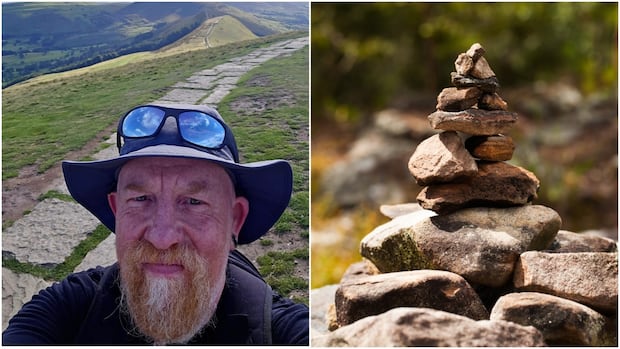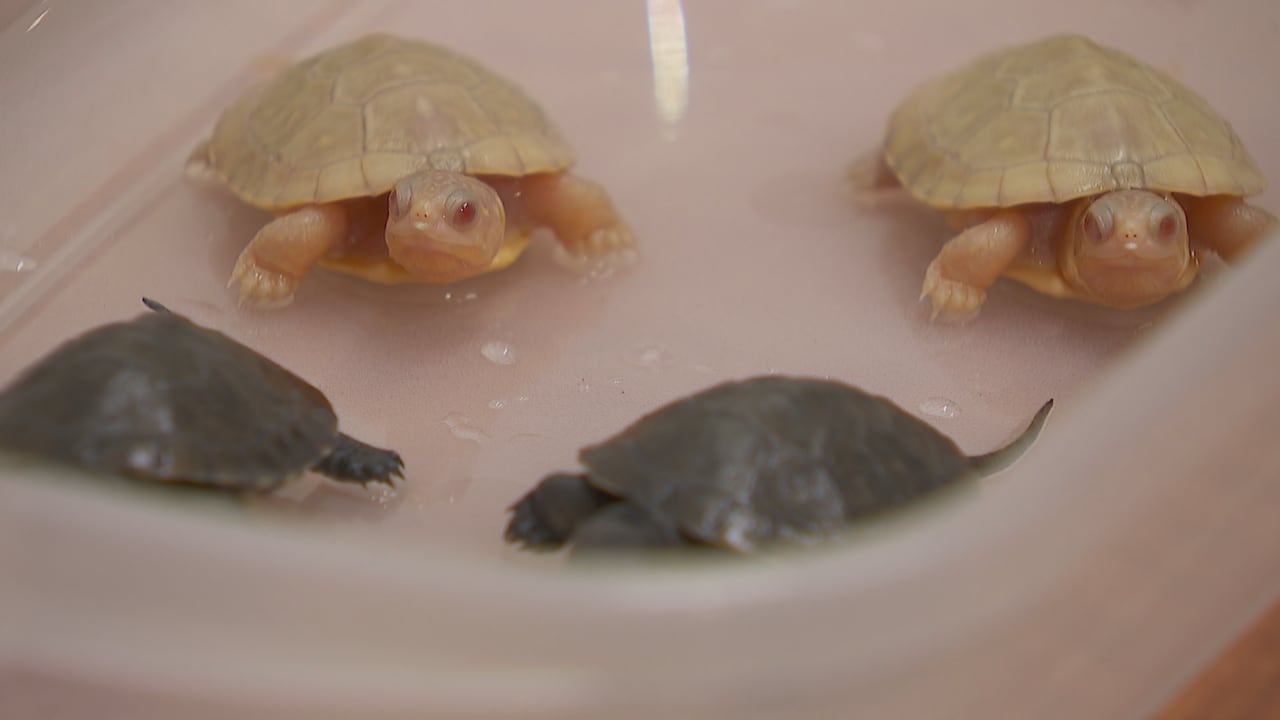Hello, Earthlings! This is our weekly newsletter on all things environmental, where we highlight trends and solutions that are moving us to a more sustainable world. Keep up with the latest news on our Climate and Environment page.
Sign up here to get this newsletter in your inbox every Thursday.
This week:
- Tips for a greener garden
- A snow cave to save glacier ice
- How to fix the pothole problem
Tips for making your garden a pollinator haven

Summertime is when many want to enjoy their gardens and spend more time outside, but with ongoing warnings of climate change, pollinator declines, and other environmental threats, some are thinking about how their backyards can help.
Pollinators such as bees, butterflies and moths are crucial to healthy ecosystems, and the production of fruits and vegetables. Almost three-quarters of the plants in the world rely on pollinators, including around 35 per cent of the world’s food crops.
However, pollinators are in decline in Canada with habitat loss from human development, pesticides and climate change being leading causes.
Colleen Cirillo is passionate about habitat gardening and native plants, and sees it as a tangible way to take action and protect the environment and wild species.
“I will also say from a personal, like physical and mental health point of view, habitat gardening is an exceptional way to protect yourself from hopelessness,” she said.
As the Rewilding Communities Campaigner for the David Suzuki Foundation, she’s worked on seminars and programs to help others do the same.
Buy native plants
Cirillo says locally sourced native plants are a key part of bringing back habitats for insects and pollinators.
While adult butterflies might take nectar from all sorts of plants, she says that at the larva stage, as caterpillars, they can only consume a small number of plants. For example, painted lady butterflies need thistles, and woodland skippers need native grasses.
“When we remove the essential plants, the insects that are specialized with those plants can’t exist. Insects have four stages of life. So we need to support them at all the stages of life.”

Native plants aren’t always sold at big, easy-to-access garden centres, and Cirillo says even looking out her window, she mostly sees non-native plants. However, she hopes to encourage people to try and incorporate more of them into yards and gardens.
Network of Nature is a website she recommends to help people find nurseries near them with native plant selections.
For those who don’t have backyards, the David Suzuki Foundation also has a project called Seed Sitters, where people can grow native plant seedlings — even on a balcony — to share with others.
Save your leaves and stems
Saving a few leaves and piling them in a small patch at the back of a garden or leaving a few flower stems for nesting insects can make a difference, and doesn’t have to impact aesthetics.
By summer, “you can’t even see them anymore, because the new vegetation has grown up all around the stems that are remaining from last year,” she said.
“So you’re creating habitat by doing nothing, by just leaving them.”
Choose natural solutions
Cirillo says gardeners should avoid using chemical pest controls, and fertilizers to control weeds or insect pests. Pesticides, which include insecticides, fungicides and herbicides, can harm pollinators and other helpful insects — and add to the stresses they face.

Using natural solutions such as compost, leaf litter, plant debris and wood mulch to control weeds is more helpful to ground-nesting bees than plastic mulch or landscape fabric, which can degrade in the soil. Pests, like slugs, can be removed by hand and aphids can be dealt with by companion planting marigolds, garlic and chives or by making habitats for their natural predators like ladybugs, lacewings and hoverflies.
“The more you know, the more you can do the right thing,” she said, adding that the work she does with the Suzuki Foundation’s Living Green campaigns is designed to take science and break it down into easy actions for regular, busy people.
Use hand or electric gardening tools
Todd Matheson in Vancouver is also on a mission to garden with climate in mind. He started mowing laws in the ’90s with the gas-powered equipment, but now, as the owner of Yard Surgeons, he’s changed how he operates.

“It always bothered me when we were expected to rake every leaf and needle and make everything ‘perfect,'” he said. “I didn’t have the initiative or the strength at the time to voice my opinion, but I finally recognized an opportunity … when the electric equipment began to appear.”
Now, he uses all electric tools — which are cleaner and quieter, compared to gas-powered lawn mowers that when running for an hour, produce as much air pollution as driving a new car 480 kilometres.
Despite some pushback from clients, Matheson is also trying to get people to move away from lawns because they consume a lot of water and don’t help biodiversity much, and toward native plants. He said that this doesn’t mean replacing all lawns entirely, but that it’s about balance.
— Bridget Stringer-Holden

Old issues of What on Earth? are here. The CBC News climate page is here.
Check out our podcast and radio show. In our newest episode: Meet the ‘cunning foxes,’ student activists who saved the Gachibowli forest in southern India. What On Earth’s youth climate action columnist Aishwarya Puttur shares what she’s heard from protesters who took a stand in defence of a cooling green space in the urban centre of Hyderabad – and what lessons the protest holds for climate action everywhere.
What On Earth23:28What the world can learn from a fight for a forest in India
What On Earth drops new podcast episodes every Wednesday and Saturday. You can find them on your favourite podcast app or on demand at CBC Listen. The radio show airs Sundays at 11 a.m., 11:30 a.m. in Newfoundland and Labrador.
Have a compelling personal story about climate change you want to share with CBC News? Pitch a First Person column here.
Reader Feedback
Last week, Anand Ram wrote a short explainer on the degrowth movement, its principles and perils.
Referring to one of the proposed ways of growing down, Joanne Tee said “fast fashion is one area that everyone could stop buying to help save an ailing climate.”
A few readers also mentioned alternative ways to measure prosperity, beyond the OECD Better Life index. John Rivière-Anderson suggested the Genuine Progress Indicator and John Challis suggested the Canadian Index of Wellbeing. Some readers pointed out a few Canadian thinkers on this topic, and we may explore more homegrown (home-degrown?) ideas in the future.
Write us at [email protected]. (And feel free to send photos, too!)

The Big Picture: A snow cave to save glacier ice

This snow cave is the Ice Memory Sanctuary at French-Italian Concordia Station in Antarctica. Its goal? To collect and preserve ice cores from endangered glaciers before they disappear due to climate change.
The ice cores drilled by scientists contain layers of snow and ice that accumulated over hundreds or thousands of years in changing climate conditions, trapping dust and chemicals from the atmosphere in the process. That makes them valuable historical climate records for different parts of the world.
Those records are at risk of melting away. The world’s glaciers have lost 6.5 trillion tonnes of ice since 2025. Eighty per cent of mountain glaciers in Alberta, B.C. and Yukon alone are expected to disappear within 50 years.
At the location of the Ice Memory Sanctuary, the annual mean temperature is -50 C, making it a “safe environment for fragile ice cores,” says the Ice Memory Foundation, based at the Universite Grenoble Alpes Foundation in France, which is behind the project. The first samples will be transported there in November.
CBC News was also part of a recent Antarctic expedition. You can read more about the climate change and political challenges facing the continent and watch some spectacular footage here.
— Emily Chung
Hot and bothered: Provocative ideas from around the web

How to fix the pothole problem

Dylan Langille is very familiar with the swerves it takes to dodge the potholes of Halifax.
“I could probably close my eyes on my commute back to my house, and I could avoid the pothole because they’ve been there for so long,” Langille told the Cost of Living.
Langille, 30, is a radio announcer and content creator. He’s milked the pothole hate on his TikTok account, including attempting to fish and golf using local potholes.
Langille is one of many Canadian drivers who have to deal with potholes on a daily basis. It has municipalities spending millions on maintenance, and drivers making frequent trips to the mechanic.
But there are some new solutions emerging to this old and growing problem — from using artificial intelligence to monitor for the holes, to changing the road surface itself.
Cost of Living9:37Why potholes are money pits
How the holes form
The main culprit for all the potholes in Canada is all the freezing and thawing roads go through, says Nemy Banthia, a professor of civil engineering at the University of British Columbia in Vancouver.
Moisture from rain and melting snow seeps under the road and freezes. That causes the ground to expand. When it gets warmer during the day, the ground shrinks back down, leaving a bulge in the road. Then, when people drive over it, it cracks.
“As the wheels go over it, they will take some of this broken off material and a pothole is formed, right there and there,” said Banthia.
And it’s getting worse, for a number of reasons. Banthia says that climate change has contributed to more of these rapid freeze and thaw cycles, and brought more intense rain.
Plus, there are about a million more registered vehicles in Canada now than six years ago.
What it costs
The economic impact of potholes is being felt across the country. According to a 2021 study published by the Canadian Automobile Association, Canadian drivers incur extra costs of $126 annually per vehicle because of poor road quality, which totals to $3 billion for Canadian drivers every year.
That includes vehicle repairs, higher maintenance, and other operating expenses, the study says.
And municipalities are paying big bucks, too.
In Edmonton, the city spent $5.9 million on pothole repair back in 2015. That budget is up to $11 million this year, which is the highest of any major city in Canada.
In 2024, crews repaired a total of 537,305 potholes. They’ve fixed 91,020 so far this year.
Can we fix it?
People have tried all sorts of clever ways to draw attention to the plight caused by potholes. In New Brunswick, a concerned citizen filled in holes with soil and flowers, which were promptly run over.
In the U.K., a British man built a pair of denim-clad wooden legs and erected them in the middle of a rain-filled hole.
In Durham, Ont., they use AI software called CityRover. Installed on a smartphone and mounted on the window of their maintenance vehicle, it can detect and log potholes that need fixing.
“If they are not detected and left too long, it can lead to larger, more expensive types of restorations to the roadway. So if we catch these potholes early, it saves us money in the long run,” said Matthew Fair, the town’s head of maintenance operations.
But according to Banthia, there are long-term solutions too.
“We need to start building roads with more innovation in them so that not only these things last longer, they also have lower carbon footprint,” said Banthia.
He says one of those solutions is to create roads that are crack-resistant. In Surrey, B.C., they tried a more flexible type of pavement that will potentially last much longer.
Then there are what’s known as “self-healing roads” — a technology that might sound like science fiction, but it’s real, says Banthia.
He’s worked with Chawathil First Nation near Hope, B.C., and the village of Thondebhavi, in Karnataka, India, where they used a fibre-reinforced concrete that’s designed to fill in the cracks as they form.
The road in Thondebhavi was paved in 2015, and when Banthia went for a visit last year, he said the road was completely crack- and pothole-free.
Banthia hopes more places in Canada will apply some of these innovations. He understands that the first-time costs for these are higher, but he says it could save money long term.
— Philip Drost
Thanks for reading. If you have questions, criticisms or story tips, please send them to [email protected].
What on Earth? comes straight to your inbox every Thursday.
Editors: Emily Chung and Hannah Hoag | Logo design: Sködt McNalty







